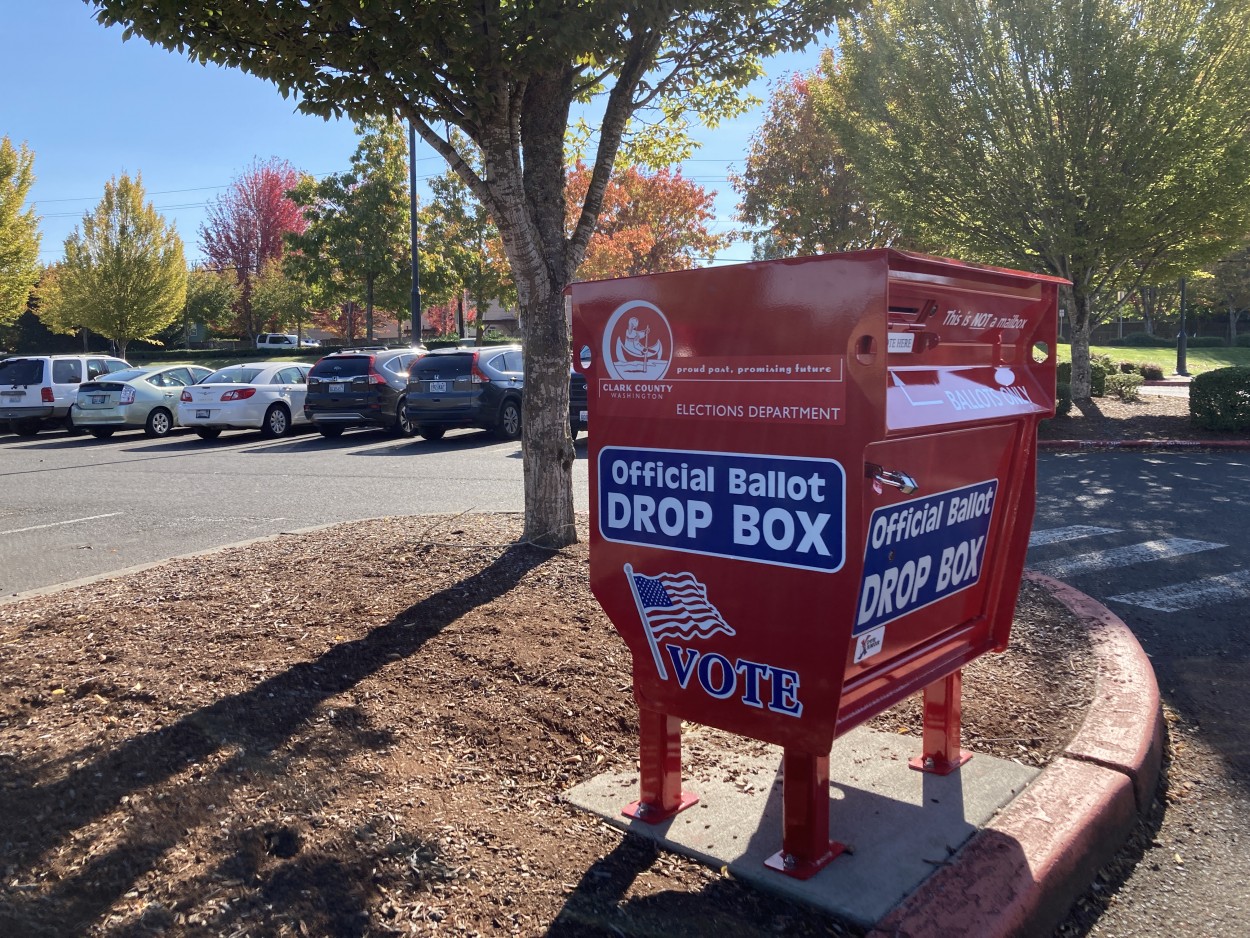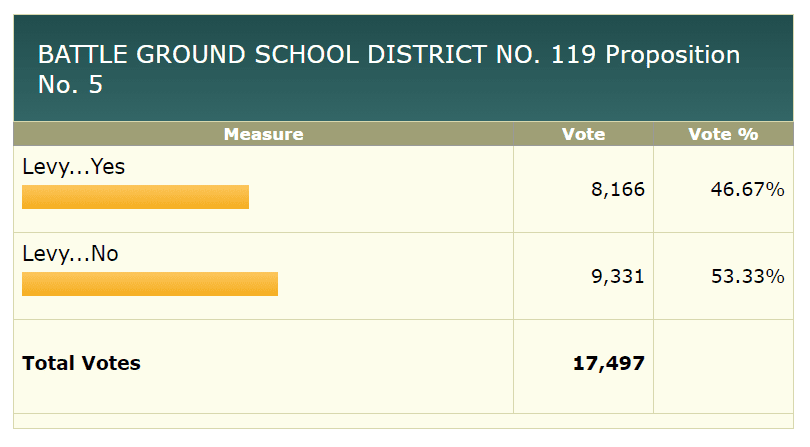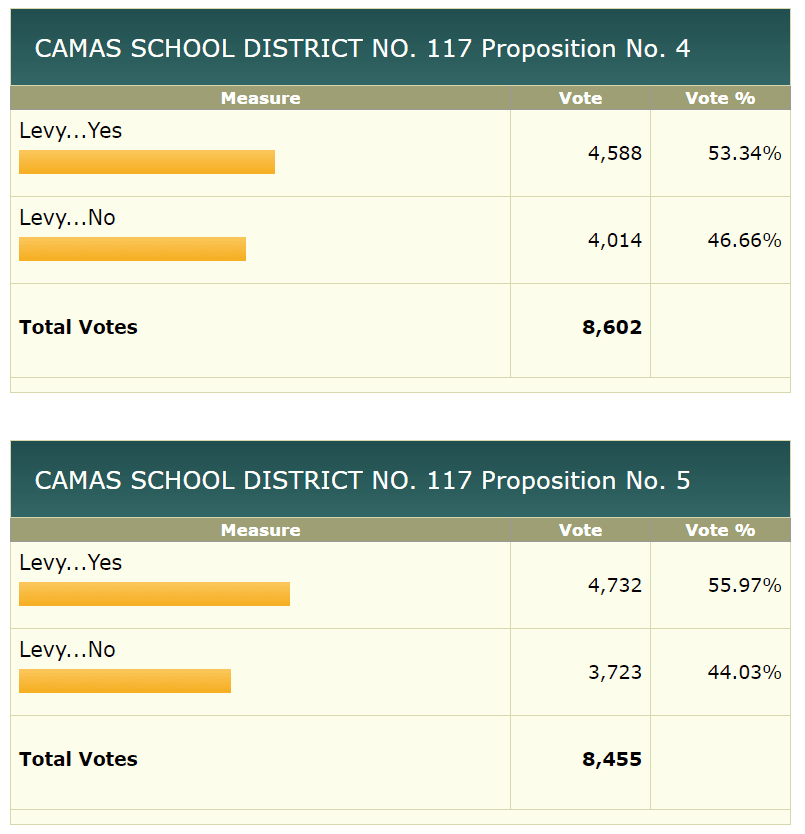The Clark County Elections Department estimates around 5,000 votes remain to be counted, making it unlikely the results will change
In early returns from the Feb. 9 special election, voters in Battle Ground appear to have narrowly defeated a replacement four-year maintenance and operations levy for the school district, while Camas voters have approved two replacement levies.

The Clark County Elections Department said estimated turnout for Tuesday’s election was 32.77 percent. Around 5,000 ballots remained to be counted.
Out of 17,497 votes cast in the Battle Ground Public Schools district, the levy was failing by 666 votes, with 53.33 percent voting no and 46.67 voting yes.
The results were nearly opposite in Camas where 53.34 percent of 8,602 voters approved of a three-year replacement Educational Programs and Operations Levy. A three year replacement Capital Levy for Educational Technology, Health and Safety Improvements was passing by a margin of 55.97 to 44.03 percent.
Decisions to be made
Battle Ground’s levy would have replaced one set to expire at the end of this year, and raise an estimated $116.2 million over four years. Notably, that amount is $20 million less than the levy currently in effect, which was passed at a rate of $3.66 per $1,000 of property value in 2017, before the state legislature capped local levies at $1.50 in 2018, then raised the cap in the following year.

The school board had opted to use emergency funding to buy down the property tax rate in the first year of the renewal levy to $1.95 per $1,000, rising to $2.20 in the final three years. That rate was still lower than the $2.50 per $1,000 people in the district paid last year, and the estimated $2.32 rate this year.
“Thank you to our community members who voted for the levy, and to the Citizens for Better Schools volunteers who support our schools,” said District Superintendent Mark Ross in a statement sent out Tuesday evening. “The district needs the community’s support to provide programs and opportunities that help our students succeed. The board will discuss the results and decide what the next steps will be for the district.”
The district’s board of directors could opt to try and run the replacement levy again in April, or wait until the August primary election, though waiting past April would also mean some cuts are likely next school year, and budgeting becomes increasingly complicated.
If the levy fails entirely, Ross estimates they would need to cut approximately $14 million from next year’s budget, with deeper cuts in later years.
Camas pulls through
Camas voters, who have a strong history of supporting the school district, were less active in their support this year, but the end result is the same.

Reached for comment Tuesday evening, Camas School District Superintendent Jeff Snell said he was nervous waiting for the results to come in.
“Obviously, this year has been really challenging for everyone,” he said. “I felt like the levy really was becoming kind of a referendum on our timeline for opening schools. And, I understand the frustration from people about that. It was hard to predict, then how people would respond.”
Still, Snell said he felt cautiously optimistic that voters would come through.
“I always try to be optimistic, but it’s been a year where that optimism is sometimes tough to lead with,” he said. “I was pleasantly surprised.”
The two Camas levies are expected to raise approximately $65.56 million for programs and technology over the next three years, at a combined rate of around $3.04 per $1,000.
“I’m just grateful that we have a supportive community,” Snell said. “We have great staff and amazing kids. And I’m glad that, if these results carry through, those kids are going to see amazing programs in the years to come.”




